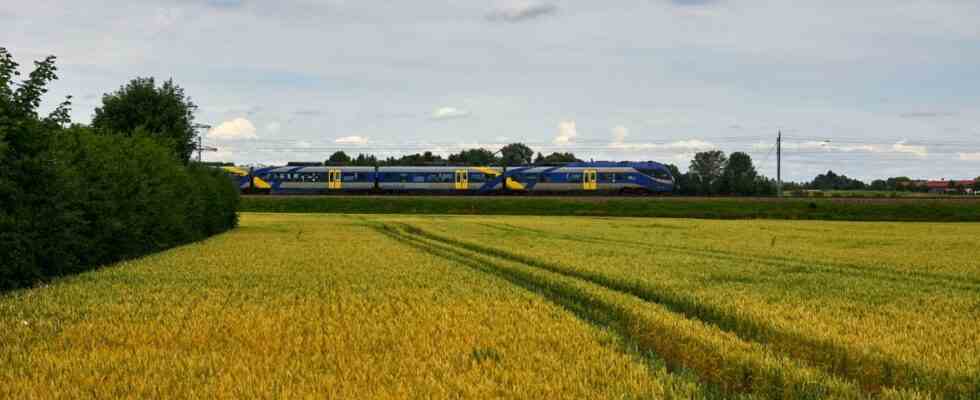The location would be ideal from a neutral point of view: south-facing hillside, sunshine all day and no disturbing buildings nearby. The railway embankment in Zorneding would therefore be well suited for an open-space photovoltaic system. The local CSU parliamentary group, which has now requested the construction of such a building in an application, apparently thought so too. In addition to this, the Christsoziale solar modules could be imagined along the main road. However, both projects are not as easy to implement as initially thought.
More than a year ago, the CSU toyed with the idea of using the railway embankment between Zorneding and Baldham and the areas around the B304 for climate-friendly energy production. Around ten percent of the local energy requirements could be covered by the solar modules on the street alone, “this shows the great importance of this project for the implementation of our energy transition goals in the district,” said a corresponding application to the municipal council at the time.
There are many specifications for ground-mounted PV systems
The Christsozialen have now submitted this again because nothing has happened so far in terms of open space PV systems. This is mainly due to the fact that the town hall administration first wanted to have an expert opinion drawn up on all potential locations in the municipal area. The planning association for the outer economic area has meanwhile presented such a plan – and thus caused disillusionment among the local politicians in Zorneding. After deducting all the exclusion criteria, there are not that many areas left where solar energy could be generated.
The Zorneding municipal council for PV systems also has the areas along the main road in mind.
(Photo: Peter Hinz-Rosin)
Above all, the distance regulations caused a shake of the head in the most recent municipal council meeting. According to the specifications of the Free State, open space systems must be at least 50 meters from a forest area, 100 meters from settlements and, depending on the classification, 15, 20 or 40 meters from roads. Similar distance rules also apply to train tracks, as Martina Pfannmüller from the planning association explained, because: “The engine driver must not be blinded and the view of signals must not be blocked.” In addition, according to the landscape planner, the possible expansion plans for the railway must be taken into account for PV systems along rails. In any case: “There must be no negative impact on the safety of railway operations.”
Deutsche Bahn wants to see specific projects before the group makes any statements about feasibility
So whether the CSU idea can be implemented cannot be said with certainty at the moment. You first have to approach the railways with a concrete plan, said Pfannmüller’s colleague Susanne Bauer, “then you’ll get a statement”. The background is that the railway embankment does not belong to the municipality but to the rail company. “And on Bahn-Grund only the Bahn can plan a project.”
In the project on the main road, however, the Rosenheim State Building Authority is the point of contact, as Pfannmüller explained. How far away the PV system actually has to be from the road is a case-by-case decision and must be clarified as part of the land use planning. On the other hand, the planner saw a greater obstacle with the ground monuments, which are abundantly underground in the area. The archaeologically valuable tombs could speak against the construction of a solar system, at least appropriate excavations are necessary in advance.
Old graves could slow down the energy transition in the district
The Zorneding municipal council was not at all happy to hear that ancient bones could slow down progress in the district. “It’s about realizing the energy transition as quickly as possible,” said Helmut Obermaier (Greens). An opinion shared by a large part of the committee: with only two dissenting votes, the municipal councils decided that no so-called presumed area within a radius of 300 meters should be used for archaeological monuments. PV systems would thus be possible closer to an excavation site, but a potential investor would not be able to avoid an archaeological survey of the ground. The municipal councils agreed that the construction of solar modules should also be possible in principle on recreational areas.
This initially has little effect on the CSU’s application. As far as this project is concerned, the administration should now contact the railways to have the realization of the system checked. The idea of solar modules in the area of federal roads is also to be pursued further.

